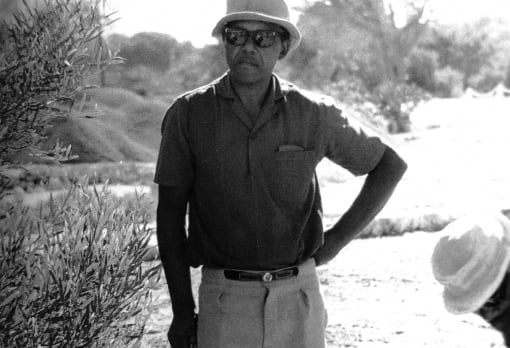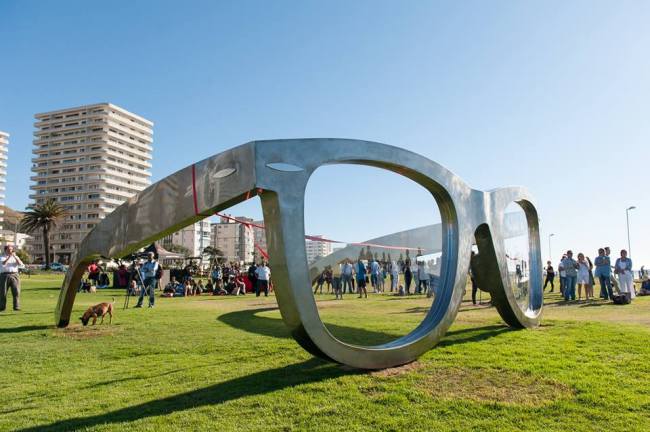Art & Exhibitions
Nelson Mandela Memorialized by Bizarre, Giant Sunglasses


Sarah Cascone


Michael Elion, Perceiving Freedom, a new memorial to the late South African president Nelson Mandela.
Photo: Michael Elion.
The latest monument to Nelson Mandela, unveiled on South Africa’s Cape Town waterfront last week, has been roundly criticized by the Atlantic‘s CityLab. The work of local artist Michael Elion, the statue is meant to honor the late South African president, but takes the form of a puzzling pair of giant stainless steel Ray-Ban Wayfarers sunglasses.
It remains unclear how anyone in a position of authority deemed the sunglasses to be an appropriate tribute to the beloved activist and politician who helped end South African apartheid. It was considered a huge affront to Mandela’s legacy that a pair of artists had inserted a minuscule rabbit figurine inside the ear of a 30-foot-tall statue of the late leader unveiled in Pretoria earlier this year. (The bunny was meant to signify the speed with which the artists had completed the commission, and to serve as a signature of sorts.) A government spokesperson told the BBC that “we don’t think it’s appropriate, because Nelson Mandela never had a rabbit in his ear,” and the offending sculpture was subsequently removed (see “South Africa Has Removed Rabbit From Nelson Mandela Sculpture’s Ear“).
Overlooking the Atlantic Ocean, the new memorial, titled Perceiving Freedom, stares out at Robben Island, home to the prison where Mandela was incarcerated for nearly three decades. It is meant to draw a connection to Mandela’s time behind bars. As per a statement from Elion, the sculpture “links us to the mind of a man whose incredible capacity to transcend enduring physical hardship, with unwavering mental fortitude and dignity, transformed the consciousness of an entire country.”

Nelson Mandela on Robben Island (1977), used by Michael Elion to promote his new monumental sunglasses memorial to the late South African president.
That’s an admirable goal, but the sunglasses seem like a strange symbol for the man—though Mandela, like most human beings, was known to occasionally throw on a pair of shades, he is hardly identified by the utilitarian fashion accessory. Moreover, Mandela’s eyesight was irreparably damaged by sun and wind during his incarceration. According to Elion, the sunglasses’ clear shades “symbolize the invisible barriers and prejudices that exist in our perceptions and shape the way we view the world.”
As if the sunglasses weren’t an odd enough choice on their own, Swiss sculptor Marc Moser has already created Sea Pink, a near-identical piece of rose-colored glasses that debuted at the 2011 Sculpture by the Sea exhibition in Aarhus, Denmark.
Calling the Elion sculpture an example of crass commercialism and consumerism, critics have noted that the sculpture’s unveiling conveniently coincides with the beginnings of the South African summer—all the better to help Ray-Ban sell sunglasses?